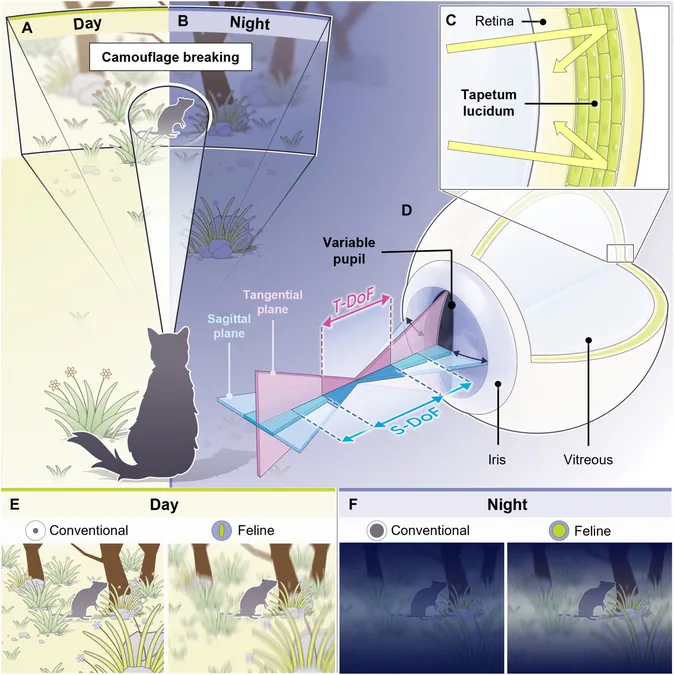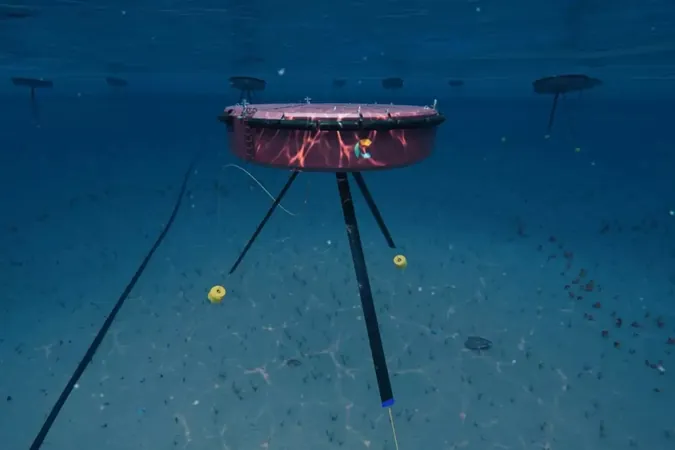
Revolutionary Artificial Eye Inspired by Cats: A Breakthrough in Night Vision and Object Detection!
2024-09-19
Introduction
In an astonishing leap forward for technology, a collaborative effort among engineers from prominent Korean institutions including the Center for Nanoparticle Research, Seoul National University, Gwangju Institute of Science and Technology, and the Korea Institute of Science and Technology has led to the creation of an innovative artificial eye mimicking the extraordinary capabilities of cat eyes.
Study Publication
Published in the prestigious journal Science Advances, the study unveils how the team harnessed two critical features of feline vision that enable these creatures to excel in low-light environments and detect camouflaged prey.
Innovative Design
Unlike typical cameras used in drones and robotics—which often replicate the human eye's circular aperture and result in images that can blur the focus on dynamic subjects—the research team opted to emulate the cat's vertically slitted pupils. This design choice enhances the depth of field, permitting the camera to maintain focus on a subject while blurring the background, thus improving the tracking of moving objects.
Biomimicry in Research
This approach is not uncharted territory; researchers have long looked to the animal kingdom for inspiration. Notably, a previous project employing the unique eye structure of cuttlefish has led to advancements in underwater visibility for robotic eyes. However, this latest artificial eye sets itself apart with its remarkable capabilities tailored for terrestrial use.
The Tapetum Lucidum
Cat eyes boast an inherent advantage in darkness thanks to the presence of a tapetum lucidum, a reflective layer situated behind the retina that augments light sensitivity. This feature is also the reason behind the signature glow of cat eyes at night. To replicate this exceptional trait, the research team ingeniously incorporated silver metal reflectors behind the image sensor in their artificial eye design.
Implications of the Technology
The culmination of these innovations results in a revolutionary camera that not only excels in dimly lit settings but is also adept at discerning hidden objects, like camouflaged ones, which could have profound implications in search and rescue operations or wildlife monitoring.
Future Prospects
Imagine a future where surveillance drones are equipped with artificial eyes that can navigate and identify targets under various conditions—this breakthrough is a monumental step in that direction. As research in biomimicry continues to evolve, the potential applications for this technology are limitless, paving the way for significant advancements in visual technologies across various fields.
Conclusion
Stay tuned as we explore further developments in this exciting area of research!




 Brasil (PT)
Brasil (PT)
 Canada (EN)
Canada (EN)
 Chile (ES)
Chile (ES)
 España (ES)
España (ES)
 France (FR)
France (FR)
 Hong Kong (EN)
Hong Kong (EN)
 Italia (IT)
Italia (IT)
 日本 (JA)
日本 (JA)
 Magyarország (HU)
Magyarország (HU)
 Norge (NO)
Norge (NO)
 Polska (PL)
Polska (PL)
 Schweiz (DE)
Schweiz (DE)
 Singapore (EN)
Singapore (EN)
 Sverige (SV)
Sverige (SV)
 Suomi (FI)
Suomi (FI)
 Türkiye (TR)
Türkiye (TR)